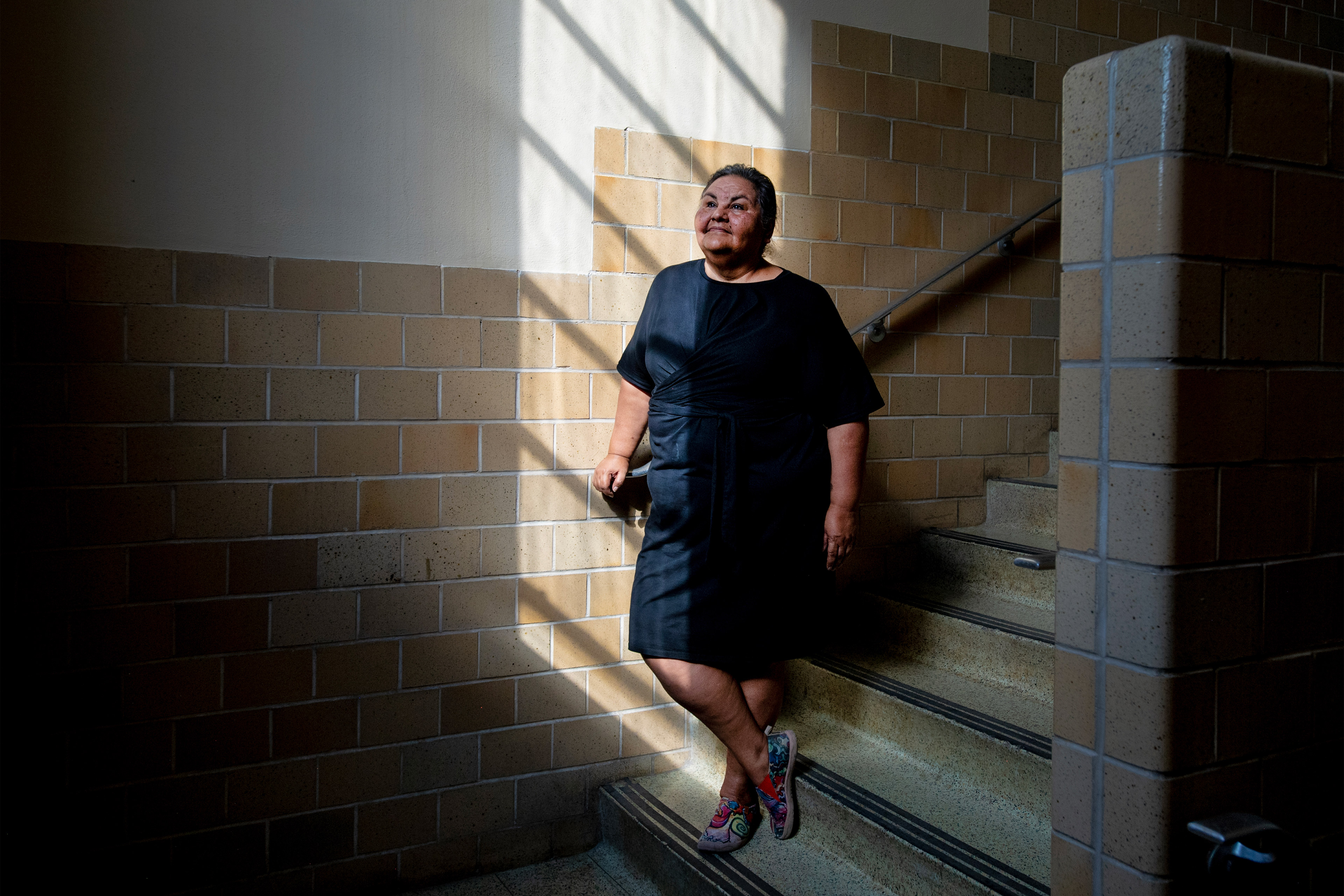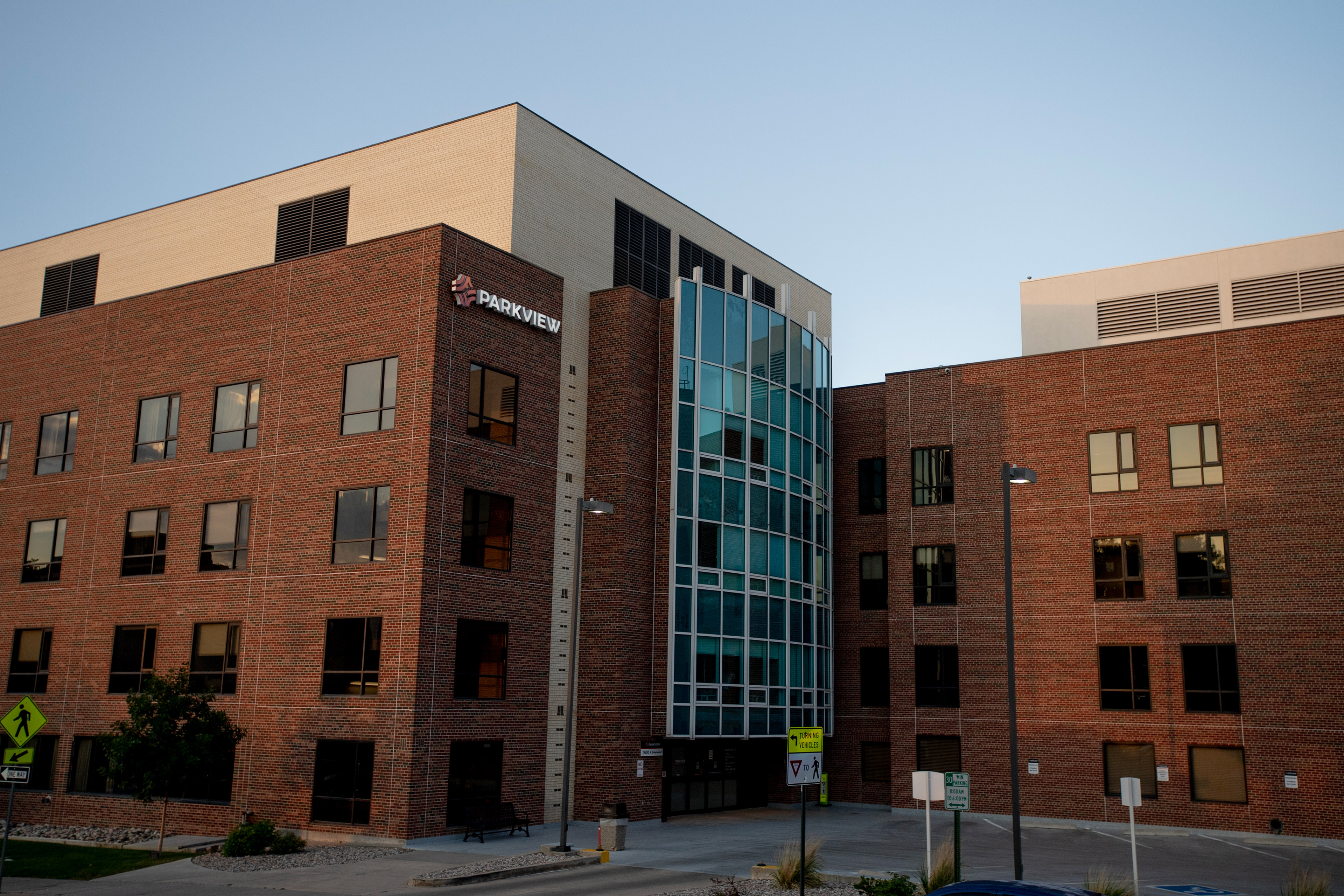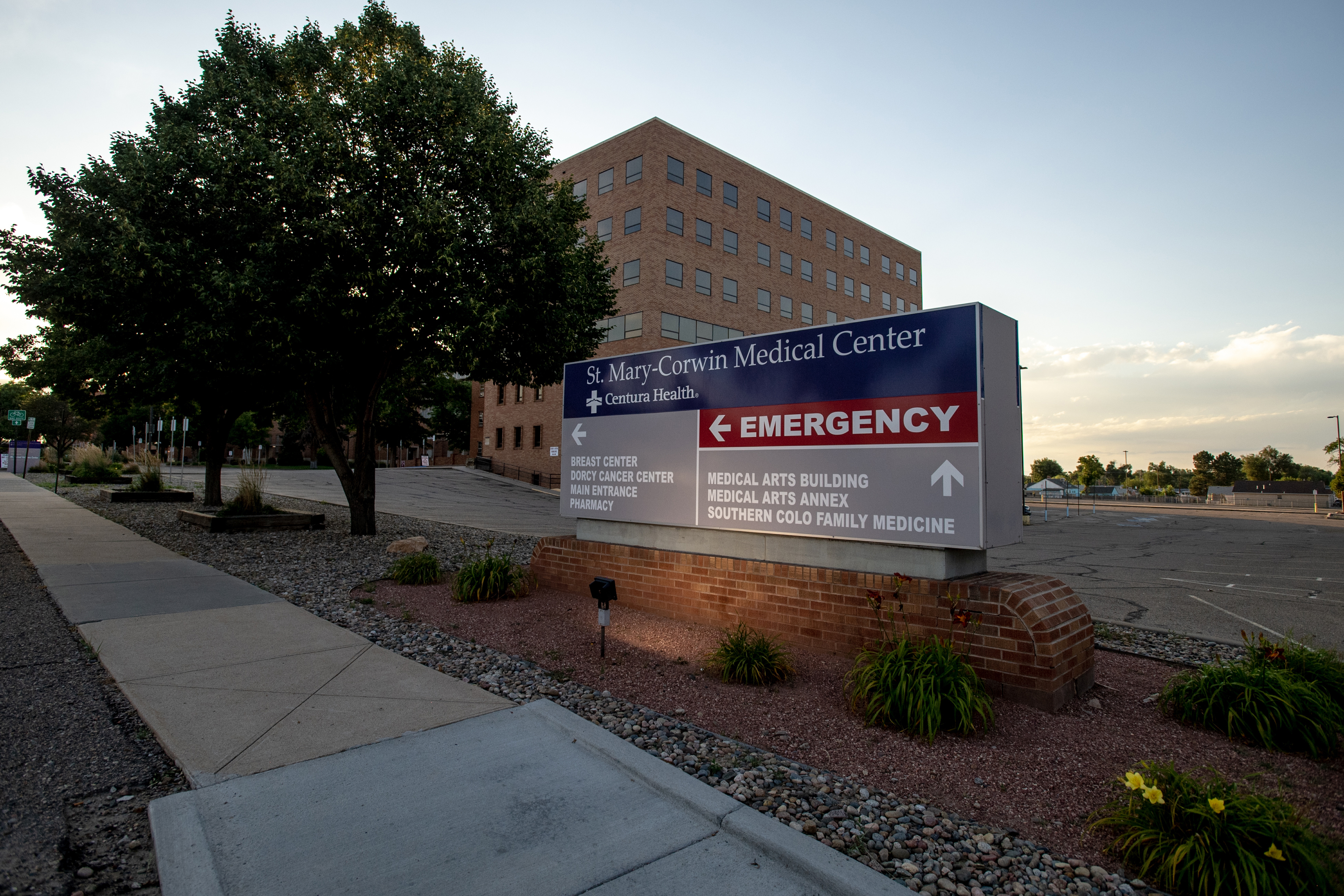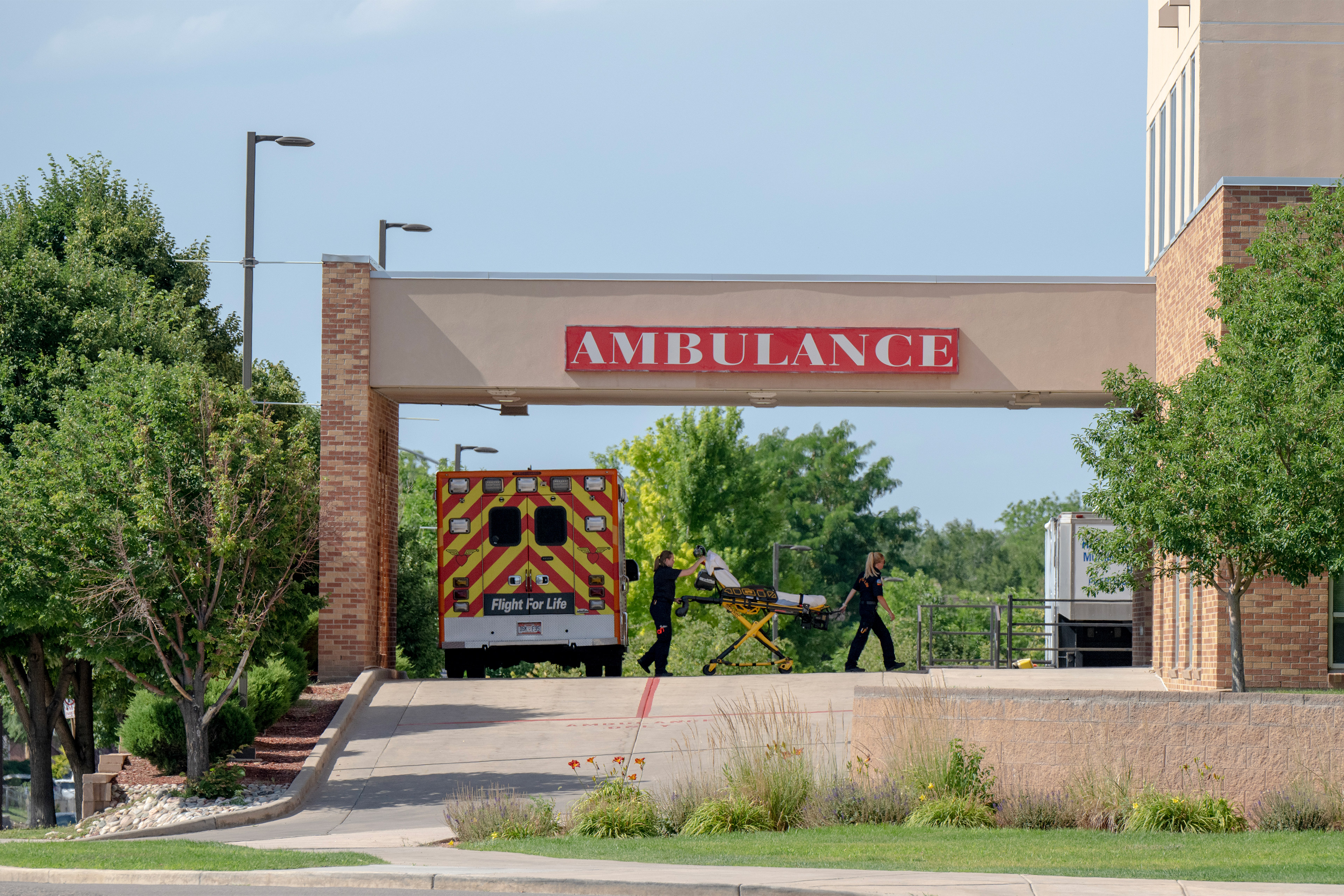PUEBLO, Colo. — As 41% of American adults face medical debt, residents of this southern Colorado metropolis contend their native nonprofit hospitals aren’t offering sufficient charity care to justify the hundreds of thousands in tax breaks they obtain.
The 2 hospitals in Pueblo, Parkview Medical Heart and Centura St. Mary-Corwin, don’t pay most federal or state taxes. In alternate for the tax break, they’re required to spend cash to enhance the well being of their communities, together with offering free care to those that can’t afford their medical payments. Though the hospitals report tens of hundreds of thousands in annual neighborhood profit spending, the overwhelming majority of that isn’t spent on the forms of issues advocates and researchers contend really create neighborhood advantages, corresponding to charity care.
And this month, 4 U.S. senators referred to as on the Treasury’s inspector normal for tax administration and the Inner Income Service to guage nonprofit hospitals’ compliance with tax-exempt necessities and supply info on oversight efforts.
The typical hospital within the U.S. spends 1.9% of its working bills on charity care, in response to an evaluation of 2021 information by Johns Hopkins College well being coverage professor Ge Bai. Final yr, Parkview supplied 0.75% of its working bills, about $4.2 million, in free care.
Centura Well being, a series of 20 tax-exempt hospitals, studies its neighborhood profit spending to the federal authorities in combination and doesn’t escape particular numbers for particular person hospitals. However St. Mary-Corwin reported $2.3 million in charity care in fiscal yr 2022, in response to its state submitting. The submitting doesn’t specify the hospital’s working bills.
The low ranges of charity care have translated into extra debt for low-income residents. About 15% of individuals in Pueblo County have medical debt in collections, in contrast with 11% statewide and 13% nationwide, in response to 2022 information from the City Institute. These Puebloans have median medical debt of $975, about 40% greater than in Colorado and the U.S. as an entire. And all of these numbers are worse for individuals of coloration.
“How far into debt do individuals must go to get any type of reduction?” mentioned Theresa Trujillo, co-executive director on the Heart for Well being Progress’ Pueblo workplace. “When you perceive that there are tens of hundreds of thousands of {dollars} each single yr that hospitals are extracting from our communities that should be reinvested in our communities, you’ll be able to’t return from that with out saying, ‘Oh my gosh, that could be a thread we have to pull on.’”
Trujillo is organizing a gaggle of fed-up residents to interact each hospitals on their neighborhood profit spending. The group of at the least a dozen residents consider the hospitals are ignoring the wants recognized by the neighborhood — issues like housing, dependancy therapy, behavioral well being care, and youth actions — and as an alternative spending these {dollars} on issues that primarily profit the hospitals and their staffs.

For the fiscal yr ending June 2022, with whole income of $593 million, Parkview reported $100 million in neighborhood profit spending. However most of that — greater than $77 million — represented the distinction between the hospital’s price of offering care and what Medicaid paid for it.
IRS pointers permit hospitals to assert Medicaid shortfall as a neighborhood profit, however many lecturers and well being coverage consultants argue such steadiness sheet shifts aren’t the identical as offering charity care to sufferers.
Parkview additionally reported $4.7 million for educating its medical workers and $143,000 in incentives to recruit well being professionals as neighborhood profit. The hospital spent solely $44,000 on neighborhood well being enchancment initiatives, which seem to have consisted primarily of launching a brand new cellular app to streamline appointments and referrals.
In the meantime, the hospital not too long ago spent $58 million on a brand new orthopedic facility and $43 million on a brand new most cancers middle. Parkview additionally wrote off $39 million in dangerous debt in fiscal 2022, though that’s completely different from charity care. The dangerous debt is cash the hospitals tried to gather from sufferers and in the end determined they’d by no means get. However by that point, these sufferers would probably have been despatched to collections and probably had their credit score broken. And excellent debt usually retains sufferers from searching for different wanted care.
There’s a disconnect between what the neighborhood mentioned its largest well being wants have been and the place Parkview directed its spending. The hospital’s neighborhood wants evaluation pegged entry to care as the highest concern, and the hospital mentioned it launched the telephone app in response.
The second-largest perceived well being want was addressing alcohol and drug use. But, the one initiative Parkview cited in response was posting preventive well being movies on-line, together with some on alcohol and drug use. In the meantime, the hospital shut down its inpatient psychiatric unit.
Parkview declined to reply questions on its charity care spending, however hospital spokesperson Todd Seip emailed a press release saying the hospital system “has been dedicated to offering in depth charity care to our neighborhood.”
Seip famous that 80% of Parkview’s sufferers are coated by Medicare or Medicaid, which pay decrease charges than business insurance coverage. The hospital posted a web lack of $6.7 million within the 2022 fiscal yr, though its charity care wasn’t appreciably greater in earlier years through which it posted a web acquire.


Centura St. Mary-Corwin reported $16 million in Medicaid shortfall and $2 million in medical workers schooling in 2022, in response to its state submitting. The hospital spent about $38,000 for its neighborhood well being enchancment initiatives, totally on emergency medical companies outreach packages in rural areas. The hospital supplied one other $96,000 in companies, primarily to advertise covid-19 vaccination.
Centura additionally declined to reply questions on its charity care spending. Hospital spokesperson Lindsay Radford emailed a press release saying St. Mary-Corwin was aligning its neighborhood well being wants evaluation course of with the Pueblo Division of Public Well being and Atmosphere “to develop shared implementation methods for our neighborhood profit funds, making certain the assets are focusing on the best wants.”
Trujillo questioned how the hospital has carried out its neighborhood well being assessments, counting on a social media ballot to determine wants. After neighborhood members recognized 12 issues, she mentioned, hospital leaders selected their priorities from the record.
“They discuss a neighborhood backyard like they’re feeding the entire south facet of the neighborhood,” Trujillo mentioned. The hospital established a neighborhood backyard in 2021, with 20 beds that may very well be adopted by residents to develop greens. Trujillo did reward the hospital for changing a part of its constructing into dorms for a neighborhood faculty nursing program.
Trujillo’s group has spent a lot of the summer time researching hospital charity spending and exhibiting up at public conferences to have their views heard. They’re working to realize seats on hospital and different state boards that affect how neighborhood profit {dollars} are spent, and are urging hospitals to reconfigure their boards to raised characterize the demographics of their communities.
“We’ve made of us now conscious that we need to be part of these processes,” Trujillo mentioned. “We’re prepared to assist them attain deeper into the neighborhood.”
Tax-exempt hospitals have been underneath elevated state scrutiny for his or her charitable spending, particularly after the Inexpensive Care Act and Medicaid growth drove down the uninsured price. That in flip reduce the quantity of care hospitals had to offer with out being paid, probably releasing up cash to assist extra individuals with out insurance coverage or with high-deductible plans.
In Colorado, hospitals’ charity care spending and dangerous debt write-offs dropped from a median of $680 million a yr within the 5 years previous to the ACA being totally carried out in 2014 to a median of $337 million within the years after, in response to the Colorado Healthcare Affordability and Sustainability Enterprise Board, a state advisory group.

In states like Colorado, which used federal funding to develop the variety of individuals coated by Medicaid, hospitals shifted extra of their neighborhood profit spending to cowl Medicaid reimbursement shortfalls.
A January report from Colorado’s Division of Well being Care Coverage & Financing concluded that funds from private and non-private well being plans assist the state’s hospitals make greater than sufficient cash to offset decrease Medicaid charges and nonetheless flip a revenue whereas offering extra true charity care.
Colorado has enacted two payments up to now 5 years to extend the transparency of hospitals’ charitable efforts with new reporting necessities.
“I believe general, we’re happy with the sum of money that hospitals are reporting they spent,” mentioned Kim Bimestefer, the chief director of the Division of Well being Care Coverage & Financing. “Is that cash being expended in significant methods, ways in which enhance well being and well-being of the neighborhood? Our studies proper now can’t decide that.”











![Understanding AICPA Life Insurance Trust Refunds [Know Your Risks!]](https://insuremonkey.com/wp-content/uploads/2022/12/Understanding-AICPA-Life-Insurance-Trust-Refunds-120x86.png)





